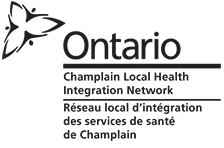Introduction
It's the student who struggles at school because she's too afraid to ask questions in class. It's the teenager who suffers from loneliness from not having any friends because he's too shy to talk to anyone in school. It's shyness so severe that it gets in the way of life...
Shyness runs along a spectrum. It is normal for everyone to be shy at certain times. It is appropriate to be more shy in some situations than in others. Some cultures value shyness more than others, especially for children. Social anxiety disorder is more than just normal shyness - it is shyness so severe that it gets in the way of enjoying school and social life.
Social anxiety is a condition where individuals experience intense anxiety in some or all of the social interactions and situations of everyday life, especially when they encounter new or unfamiliar people or situations. It is also known as social phobia.
Individuals with social anxiety tend to have difficulties with performance situations, such as public speaking; talking in classes or meetings; performing music or acting on stage; eating or drinking in front of others; using public restrooms when other people are nearby; making mistakes in front of others.
Individuals with social anxiety tend to avoid (or endure with distress) social situations such as: starting up a conversation with others (who aren't close friends); going to a party or dance; talking to strangers; talking on the phone; expressing personal opinions; talking to those in authority (e.g., teacher, employer). Bullies may notice children and adolescents with social anxiety, feel that they are helpless, and single them out as victims.
How Common is it?
Social anxiety disorder is quite common, affecting about 1 adolescent in 20 (estimates vary).
If You Suspect Social Anxiety Disorder
If you are concerned that your child may have problems with social anxiety, then take your child to the doctor. It is important for the doctor to make make sure that there are no medical conditions contributing to the anxiety. The doctor can then help with any referrals to more specialized mental health services or professionals in the community, such as a psychologist.
How Is It Treated?
Typical treatments for social anxiety include:
1. Cognitive-behavioural therapy (CBT), which helps people overcome social anxiety through a variety of cognitive and behavioural techniques. Techniques used in CBT include:
a. Cognitive restructuring: learning to think in a different and more positive way about other people and about oneself. Many people with social anxiety feel that they are not good at anything and that they will always fail, so there is no point in trying.
b. Exposure: gradually and repeatedly exposing the person to the feared situation, until the person is no longer afraid of the situation. For example, someone who is afraid to talk to teachers might start by talking to the teacher after class, privately, and then work up to being able to talk to the teacher during class with others around. Exposure is done using a ‘hierarchy', a step-by-step approach starting with easy behaviours and working up to more challenging behaviours.
c. Role plays: where a person practices new ways of responding to situations that are scary. For example, a child who is anxious about talking to other children might practice a pretend situation with a family member or therapist.
d. Social skills training: where a person is explicitly taught the steps and rules of effective social interaction. Because individuals with social anxiety avoid social situations, they often do not have the same opportunities to learn social skills as others might have. Thus, it may be helpful to explicitly learn what to do.
e. Problem-solving: working together with the child to figure out what problems are getting in the way of the child. The individual is taught how to solve problems systematically by brainstorming, estimating the advantages and disadvantages of various possible solutions to a problem, and planning the steps involved in implementing the best solution. It is important for the child to learn how to go through this process whenever he or she faces a problem, not simply to learn how to solve one immediate problem.
2. Medications, which can be prescribed by a physician. Medications are generally reserved for situations where social anxiety has not responded to other types of counselling or therapy, or where the anxiety is so severe that counselling/therapy is not possible. Evidence shows that when appropriately used, medication is safe and effective (Bridge, JAMA, Apr 18, 2007). In addition, there is also newer evidence that suggests medications in combination with psychotherapy are more effective than using medications alone, or psychotherapy alone (Walkup et al., 2008).
How You Can Help a Young Person with Social Anxiety
-
Don't blame. Don't blame yourself, or your child/youth for the social anxiety problems. It simply isn't helpful. And frankly, there are so many different factors for social anxiety, including genetics, and the environment that it is never any single person's fault. Instead, focus your energy on asking, "What can I do right now to help my child?"
-
Allow your child to face his/her fears; don't be overprotective. It is natural to try to protect your shy, anxious child from stressful social interactions. But when your child is overprotected, it makes things worse because your child misses out on opportunities to pick up the skills needed to make friends. Parents can gently encourage social contacts. For a young child, it may be helpful to arrange joint activities with other parents who have children the same age. However, it may not be wise to set children up to "sink or swim" - to force them all at once into too many activities or activities they find extremely stressful. Helping your child gradually face his/her fears by starting with less challenging, and gradually move up to more challenging social situations. For example, start with closely supervised, structured activities. E.g. watching a movie. If successful, then move to less supervised, more unstructured activities. E.g. playing an imaginary game together with a friend.
Seeing that the anxious child is unable to plan and manage social contacts, many parents start to direct and control their anxious children's social lives completely. This can be overdone, depriving the child even further of the opportunity to learn how to manage things. It is often more helpful to provide gentle guidance and to ask pointed questions that help the shy, anxious child learn to plan and solve problems.
-
If at first, you don't succeed... Children with anxiety tend to cope by avoidance, which means they tend to avoid challenges and stresses. If a child is not yet successful in a situation, adults can talk to the child about what made the situation difficult, try to problem-solve it, and then most importantly, try again.
Parents can express sympathy and understanding and give hope by emphasizing there will be more chances in the future to succeed ...
-
Allow your child to express and feel whatever s/he feels. It is also natural for parents to try to change their children's expressions of anxiety and sadness, e.g. by saying, "Don't be sad - that's nothing to feel sad about!" This invalidates the child and leads the child to keep those feelings inside. It is important to encourage children to express in words their worries and sadness where it is appropriate, as in private conversations at home.
Recommended Readings for Parents
Useful websites
- The Offord Centre has information about a variety of mental health conditions in parent-friendly language. http://www.knowledge.offordcentre.com/
-
Children's Mental Health Ontario is the professional association representing children's treatment centres throughout Ontario, however, they also have an excellent section of reviewed links to useful websites with child and youth mental health information.
http://www.cmho.org
Books
- Helping Your Anxious Child, Sue Spence, 2000
- Keys to Parenting Your Anxious Child, Katharina Manassis, 1996
- Freeing Your Child from Anxiety, Tamar Chansky, 2004
References
Bridge JA, Iyengar S, Salary CB, Barbe RP, Birmaher B, Pincus HA, Ren L, Brent DA, (2007). Clinical response and risk for reported suicidal ideation and suicide attempts in pediatric antidepressant treatment. A meta-analysis of randomized controlled trials. JAMA, 297:1683-1696.
Walkup et al.: Cognitive Behavioral Therapy, Sertraline, or a Combination in Childhood Anxiety. New England Journal of Medicine, 2008;359.
About This Document
Created in partnership with psychologist Dr. Barry Schneider and colleagues at the Department of Psychology at the University of Ottawa. Reviewed by the eMentalHealth.ca Team.
Protected by a Creative Commons License (Attribution-NonCommercial-NoDerivs 2.5 Canada). Copying and distribution is permitted for non-commercial purposes as long as this material is shared in its entirety and not altered in any way. Full license here: http://creativecommons.org/licenses/by-nc-nd/2.5/ca/
























